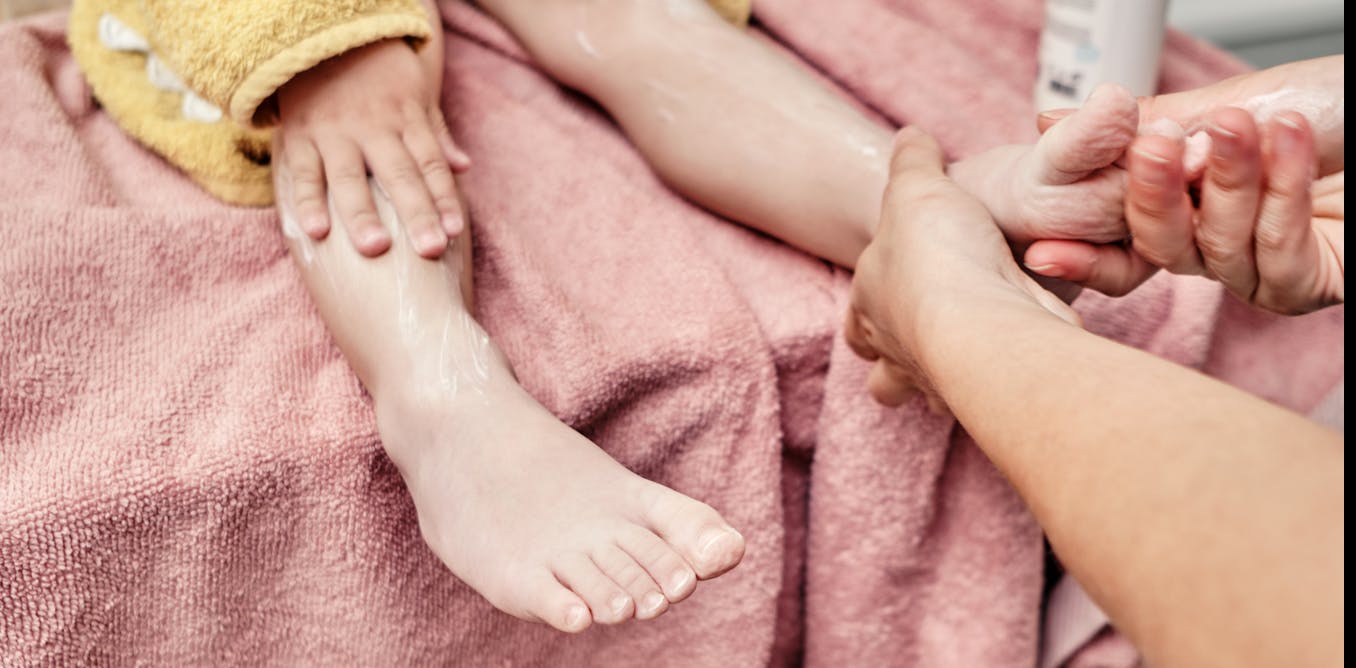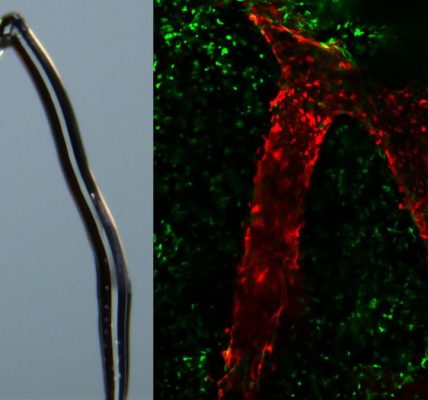
“We haven’t had a full night time’s sleep since our son was born eight years in the past,” mentioned Mrs. B, pointing to her son’s dry, crimson and itchy pores and skin.
Her son has had eczema his total life. Also called atopic dermatitis, this power pores and skin illness impacts about 1 in 5 children within the industrialized world. Some research have discovered rates of eczema in developing nations to be over thirtyfold decrease in contrast with industrialized nations.
Nevertheless, charges of eczema didn’t spike with the Industrial Revolution, which started round 1760. As a substitute, eczema in international locations reminiscent of the U.S., Finland and other countries began quickly rising round 1970.
What Brought about Eczema Charges to Spike?
I’m an allergist and immunologist working with a workforce of researchers to check developments in U.S. eczema charges. Scientists know that elements reminiscent of diets wealthy in processed foods in addition to publicity to specific detergents and chemicals enhance the chance of growing eczema. Dwelling close to factories, major roadways or wildfires enhance the chance of growing eczema. Environmental exposures may come from inside the house by way of paint, plastics, cigarette smoke or artificial materials reminiscent of spandex, nylon and polyester.
Whereas researchers have paid a whole lot of attention to genetics, the perfect predictor of whether or not a toddler will develop eczema isn’t in their genes however the environment they lived in for their first few years of life.
There’s One thing within the Air
To determine what environmental adjustments could have brought about a spike in eczema within the U.S., we started by searching for potential eczema sizzling spots – locations with eczema charges that had been a lot increased than the nationwide common. Then we checked out databases from the U.S. Environmental Safety Company to see which chemical substances had been commonest in these areas.
For eczema, together with the allergic ailments that routinely develop with it– peanut allergy and bronchial asthma – two chemical courses leaped off the web page: diisocyanates and xylene.
Diisocyanates had been first manufactured within the U.S. around 1970for the manufacturing of spandex, nonlatex foam, paint and polyurethane. The manufacture of xylene additionally elevated round that point, alongside a rise within the production of polyester and different supplies.
Chemical substances concerned in clothes manufacturing could be hazardous to well being. andresr/E+ by way of Getty Photos
The chemically lively portion of the diisocyanates and xylene molecules are additionally present in cigarette smoke and wildfires. After 1975, when all new automobiles turned outfitted with a brand new know-how that transformed exhaust gasoline to much less poisonous chemical substances, isocyanate and xylene each turned components of automobile exhaust.
Analysis has discovered that exposing mice to isocyanates and xylene can directly cause eczema, itch and inflammation by increasing the activity of receptors concerned in itch, ache and temperature sensation. These receptors are additionally extra lively in mice positioned on unhealthy diets. How instantly exposing mice to those toxins compares to the standard ranges of publicity in folks remains to be unclear.
How and why would possibly these chemical substances be linked to rising charges of eczema?
Pores and skin Microbiome and Air pollution
Each individual is coated with thousands and thousands of microorganisms that stay on the pores and skin, collectively known as the skin microbiome. Whereas researchers don’t know every thing about how pleasant micro organism assist the pores and skin, we do know that folks want these organisms to produce certain types of lipids, or oils, that maintain the pores and skin sealed from the atmosphere and stave off an infection.
You’ve in all probability seen moisturizers and different pores and skin merchandise containing ceramides, a group of lipids that play an necessary function in defending the pores and skin. The quantity of ceramides and associated compounds on a toddler’s pores and skin throughout their first few weeks of life is a consistent and significant predictor of whether or not they’ll go on to develop eczema. The much less ceramides they’ve on their pores and skin, the extra possible they’ll develop eczema.
The pores and skin microbiome produces lipids generally present in moisturizers. FluxFactory/E+ by way of Getty Photos
To see which toxins might stop manufacturing of the useful lipids that stop eczema, my workforce and I used pores and skin micro organism as canaries within the coal mine. Within the lab, we uncovered micro organism that instantly make ceramides (reminiscent of Roseomonas mucosa), micro organism that assist the physique make its personal ceramides (reminiscent of Staphylococcus epidermidis) and micro organism that make different useful lipids (reminiscent of Staphylococcus cohnii) to isocyanates and xylene. We made positive to reveal the micro organism to ranges of those chemical substances which can be much like what folks is likely to be uncovered to in the actual world, reminiscent of the usual ranges launched from a manufacturing unit or the fumes of polyurethane glue from a ironmongery store.
We discovered that exposing these micro organism to isocyanates or xylene led them to cease making ceramides and as a substitute make amino acids reminiscent of lysine. Lysine helps protect the bacteria from the harms of the toxins however doesn’t present the well being advantages of ceramides.
We then evaluated how bed sheets manufactured using isocyanates or xylene have an effect on the pores and skin’s micro organism. We discovered that dangerous micro organism reminiscent of Staphylococcus aureus proliferated on nylon, spandex and polyester however couldn’t survive on cotton or bamboo. Micro organism that assist maintain pores and skin wholesome might stay on any material, however, simply as with air air pollution, the quantity of useful lipids they made dropped to lower than half the degrees made when grown on materials like cotton.
Addressing Air pollution’s Results on Pores and skin
What could be achieved in regards to the connection between air pollution and eczema?
Detectors able to sensing low ranges of isocyanate or xylene might assist observe pollution and predict eczema flare-ups throughout a group. Higher detectors may assist researchers establish air filtration techniques that may scrub these chemical substances from the atmosphere. Throughout the U.S., folks can use the EPA Toxics Tracker to search for which pollution are commonest close to their house.
Within the meantime, enhancing your microbial steadiness could require avoiding products that limit the growth of wholesome pores and skin micro organism. This may increasingly embody sure skincare merchandise, detergents and cleansers. Significantly for teenagers beneath 4, avoiding cigarette smoke, artificial materials, nonlatex foams, polyurethanes and a few paints could also be suggested.
Changing micro organism that has been overly uncovered to those chemical substances may assist. For instance, my analysis has proven that applying Roseomonas mucosa, a ceramide-producing bacterium that lives on wholesome pores and skin, can result in a months lengthy discount in typical eczema signs compared with placebo. Researchers are additionally learning other potential probiotic treatments for eczema.
Evaluating the environmental causes of ailments which have grow to be more and more widespread in an more and more industrialized world might help shield youngsters from chemical triggers of situations reminiscent of eczema. I imagine that it could in the future enable us to get again to a time when these ailments had been unusual.
Ian Myles, Chief of the Epithelial Therapeutics Unit on the Nationwide Institute of Allergy and Infectious Ailments. This text is republished from The Conversation beneath a Creative Commons license. Learn the original article.






